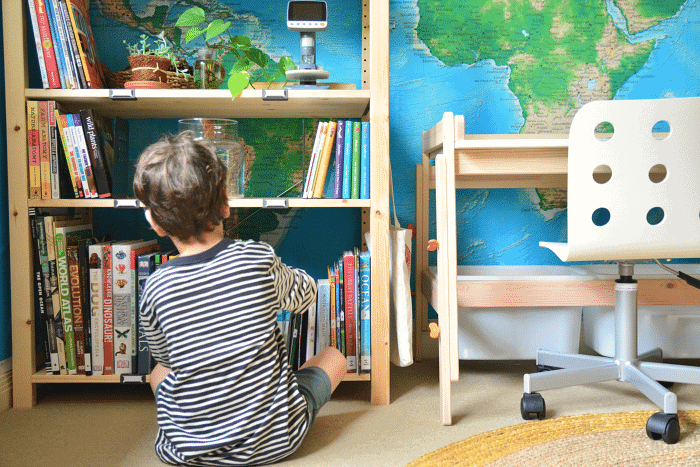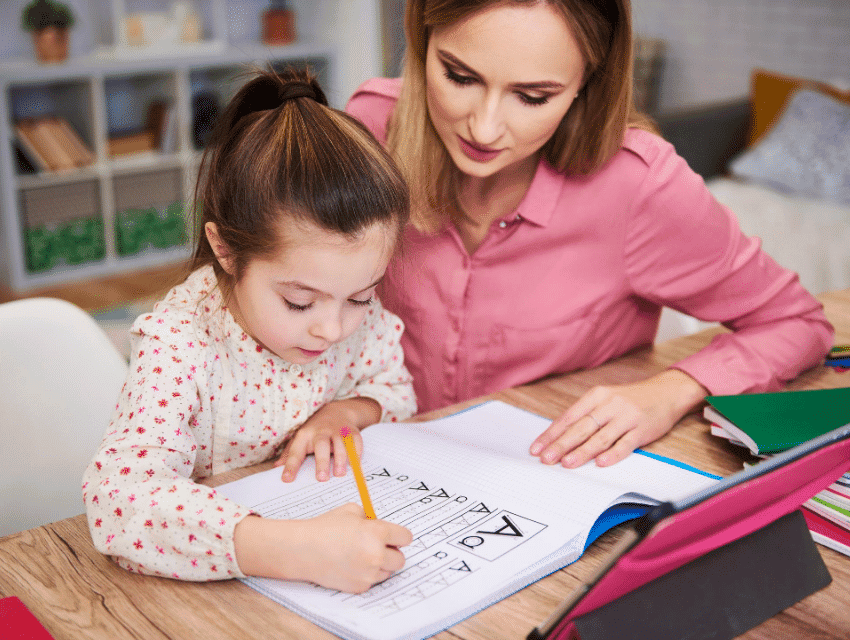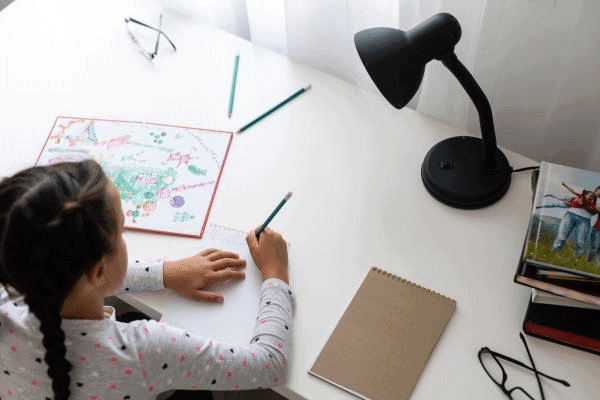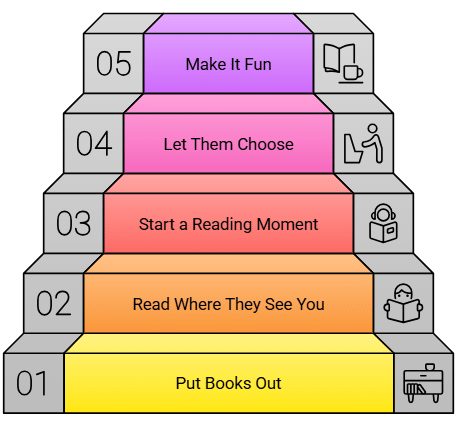Cultivating a Love for Reading: Environment Shapes a Child's Habits | Guide for Mindful Parenting in 2025 - LKG PDF Download
| Table of contents |

|
| Why Environment Matters |

|
| Creating a Reading-Friendly Environment |

|
| Long-Term Benefits |

|
| How to Start |

|
| Handling Problems |

|
| Real-World Example |

|
Why Environment Matters
Some kids love books, while others avoid them like homework. The difference often comes from the home they grow up in. As the saying goes, “The environment creates the child. Parents create the environment.” The way you set up your home shows kids what matters.
- Books Around Make a Difference: A study in Reading Research Quarterly found that kids who see books at home and watch their parents read are more likely to enjoy reading. If books are easy to grab and reading looks fun, kids get curious. But if books are hard to find or reading feels like a chore, kids might think it’s boring.
- Kids Copy What They See: If you read for fun, kids notice. A study in Journal of Literacy Research showed that kids with parents who read for pleasure are more likely to pick up books themselves. For example, if you’re always on your phone but never read a book, kids might think screens are more important.
- Reading as a Chore Hurts: If you say, “Read your book or no TV,” kids might see reading as a punishment. A study in Early Childhood Research Quarterly found that kids forced to read without joy are less likely to love books later. Instead, making reading fun and cozy helps them want to do it.
If your home makes reading exciting and normal, kids are more likely to love it. If books are hidden or reading feels like work, they might avoid it.
Creating a Reading-Friendly Environment
You don’t need a fancy library to make your home a place where kids love books. Here are four easy ways to do it, with extra details and examples for different ages:
1. Make Books Accessible
Put books where kids can see and grab them, like in the living room, kitchen, or even the car. A basket of picture books for little kids or novels for older ones invites them to explore. Don’t hide books on high shelves or in closed rooms.
- For Younger Kids (3–6): Keep a colorful basket of picture books in the living room. Let them flip through books like The Very Hungry Caterpillar while you cook. This makes books part of daily life.
- For Older Kids (7–12): Leave a few adventure or mystery books, like Percy Jackson, on the kitchen table. They might pick one up while eating a snack.
- For Teens (13+): Place magazines, graphic novels, or books about their hobbies (like sports or music) on the coffee table. For example, a teen into gaming might grab a book about esports.
Tip: Rotate books every few weeks to keep things fresh. For example, swap out old picture books for new ones from the library or add a new graphic novel for a teen.

2. Be a Role Model
Let your kids see you reading for fun, whether it’s a novel, magazine, or newspaper. Talk about what you like in your book to get them curious. If they see you excited about reading, they’ll want to try it.
- For Younger Kids: Read a picture book or a short story while they play nearby. Say, “This book is so funny! Want to hear a bit?” This shows reading is fun.
- For Older Kids: While they do homework, read a book nearby and share a cool fact, like, “I’m reading about space—it’s wild how big the universe is!” They might ask more.
- For Teens: Talk about a book or article you enjoyed, like, “This mystery book kept me guessing! What kind do you like?” This starts a conversation without pushing.
Tip: Keep a book or e-reader on the table during meals. If kids ask, share a quick bit about it, like, “This book has a dragon that talks—it’s so cool!”
3. Read Together
Reading with your kids, like bedtime stories or family reading time, makes books feel special and fun. For older kids, talk about a book you’re both reading to keep them interested.
- For Younger Kids: Read a bedtime story every night, like Goodnight Moon. Let them pick the book and snuggle up. This makes reading a cozy, happy time.
- For Older Kids: Set up a family reading night once a week. Everyone reads their own book for 20 minutes, then shares something fun about it. For example, read Harry Potter together and talk about your favorite character.
- For Teens: Pick a book to read together, like The Hunger Games, and discuss it over pizza. Ask, “What would you do in Katniss’s place?” to get them talking.
Tip: If kids resist, make it special. For example, read under a blanket fort with a flashlight for young kids, or let teens pick a book for a family movie night tie-in (like reading The Fault in Our Stars before watching the film).

4. Celebrate Choice
Let kids pick books they like, even if it’s comics, graphic novels, or books about video games. When they choose, they’re more excited to read.
- For Younger Kids: At the library, let them pick any picture book, like Pete the Cat. Even if it’s the same one every time, it builds their love for books.
- For Older Kids: Let them choose a series, like Diary of a Wimpy Kid, or even a comic book. Say, “What looks fun to you?” to show you trust their choice.
- For Teens: Let them pick anything—graphic novels, manga, or books about their interests, like fashion or cars. For example, a teen into art might love a biography about Frida Kahlo.
Tip: Take kids to a library or bookstore and set a small budget, like $5, so they can pick something. If they’re stuck, suggest a few options but let them decide.
Long-Term Benefits
A love for reading does more than make kids bookworms. It helps them grow in big ways:
- Better Words: Reading builds vocabulary, which helps kids do better in school. A study in Journal of Educational Psychology found that kids who read for fun have stronger language skills.
- Understanding Others: Books teach kids to see things from other people’s views, like in stories about different cultures or feelings. A 2020 study in Social Development says this makes kids kinder and better at making friends.
- Smarter Thinking: Reading helps kids solve problems and think critically. For example, a mystery book like Nancy Drew teaches them to look for clues and make guesses.
- Lifelong Learning: Kids who love reading keep learning as adults, whether it’s for school, work, or fun. A study in Learning and Individual Differences found that kids who read early are more curious and successful later.
When books are a normal, fun part of home life, kids grow up loving to learn and understanding the world better.
How to Start
You don’t need to change everything at once. Here’s a simple plan to make your home a reading-friendly place, with extra details:
- Put Books Out: Place a few books where kids hang out, like the living room or kitchen table. Start with one basket of books for young kids or a stack of novels for older ones. Try library books to keep it cheap.
- Read Where They See You: Spend 10 minutes a day reading something you like—a book, magazine, or even a blog. Let kids see you and say something like, “This story is so exciting!” to spark their interest.
- Start a Reading Moment: Read a short story or chapter to your kid today. For young kids, try a 5-minute bedtime story. For older kids or teens, read a page aloud from a fun book and ask, “Want to hear more?”
- Let Them Choose: Next time you’re at the library, let your kid pick one book they want, no matter what it is. Say, “Find something that looks cool to you!”
- Make It Fun: Add a special touch, like reading with hot cocoa or letting kids read to a pet or stuffed animal. For teens, tie reading to something they love, like a book about their favorite band.

Handling Problems
Making reading fun at home can have bumps. Here are common issues and how to fix them, with extra details:
- Kids Say Reading Is Boring: If a kid doesn’t like books, try something they love, like comics about superheroes or books about animals. For example, a 7-year-old who loves dinosaurs might enjoy Dinosaurs Before Dark. Ask, “What kind of story sounds fun?”
- No Time to Read: If you’re busy, start small. Read for 5 minutes before bed or in the car. Even listening to an audiobook together counts, like during a drive to school.
- Kids Prefer Screens: If screens are winning, set a “reading first” rule, like 10 minutes of reading before TV. Or find books tied to their favorite shows, like Stranger Things novels for teens.
- Different Ages: Younger kids love colorful picture books, while older kids might want adventure stories. Teens might prefer audiobooks or short stories. For example, a 5-year-old might love Dr. Seuss, while a 13-year-old might like The Giver.

Real-World Example
Imagine your 7-year-old avoids books. Try this:
- Step 1: Make Books Accessible: Put a basket of books like Dog Man in the living room. Say, “Check out these funny comics when you want!”
- Step 2: Be a Role Model: Read a magazine while they play. Say, “This article about dogs is cool—want to see a picture?”
- Step 3: Read Together: At bedtime, read a chapter of Charlotte’s Web and ask, “What do you think Wilbur will do next?”
- Step 4: Celebrate Choice: At the library, let them pick any book. If they choose a comic, say, “That looks awesome!”
For a Younger Kid (4 years old): Leave Brown Bear, Brown Bear on the couch. Read it together, making animal noises. Let them pick the next book.
For a Teen (15 years old): Put a graphic novel like Nimona on the table. Read a music magazine yourself and say, “This article about Billie Eilish is wild—want to read it?” Suggest a family movie night with a book tie-in, like Dune.
|
10 docs|2 tests
|
FAQs on Cultivating a Love for Reading: Environment Shapes a Child's Habits - Guide for Mindful Parenting in 2025 - LKG
| 1. Why is creating a reading-friendly environment important for children? |  |
| 2. What are some long-term benefits of instilling a love for reading in children? |  |
| 3. How can parents start creating a reading-friendly environment at home? |  |
| 4. What are some common problems parents face when trying to encourage reading, and how can they handle them? |  |
| 5. Can you provide a real-world example of how a reading-friendly environment has positively impacted a child? |  |















